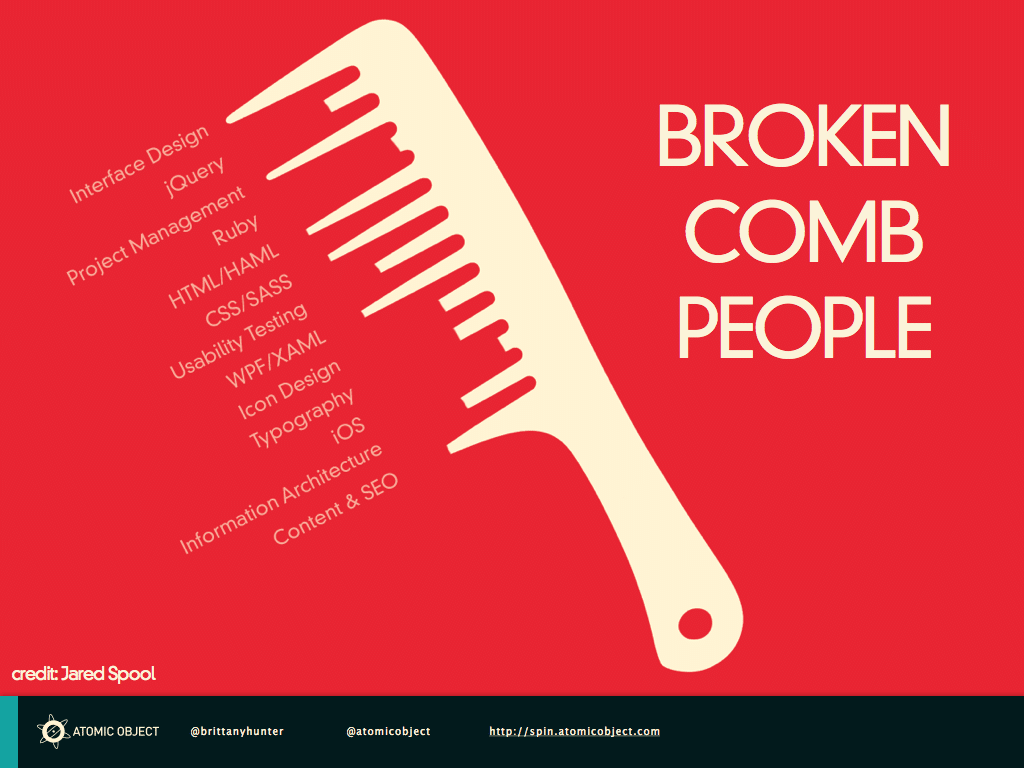Article summary
The “T-shaped person” has long been held up as a holy grail in the software industry. Supposedly, it is the thing you ought to be striving for as a person and the people you ought to be hiring.
I’ve always disagreed.
I think that, especially within a small team or an innovation services firm like Atomic Object, the ideal candidate looks more like a broken comb. (Many thanks to Jared Spool for introducing this term in his talk “Is there a T in Team?” at the 2012 Balanced Team meetup in Chicago.)

Why I’m a Broken Comb
Here’s what being a Broken Comb person means to me:
- Broken Comb people are continuously striving to learn and improve and to go deeper than just the surface, whatever discipline they are learning about.
- Being a broken comb makes me a better problem solver. When working in one discipline, I apply patterns of thinking and strategies gleaned from other disciplines, as relevant.
- Being a broken comb makes me a more effective team member. It means that as part of a software development team, I know when there are things I can do on my own to advance the project, and I know when I’m out of my depth and it’s time to collaborate.
- Being a broken comb makes me a more effective designer. When I have experience with the tech stack that I’m designing for, I know the possibilities and the limitations of that technology. Being familiar with the unique characteristics of a technology or platform, I can take advantage of the affordances a technology has and stay away from its pitfalls, leading to better implementation of my design.
Advantages of Broken Comb Teams
Broken Comb teams are more efficient and flexible.
With certain exceptions, organizations with many T-shaped people may have difficulty keeping all of those T-shaped people busy. If the base of my T is icon design, but there are no icons available to design, I am either stuck twiddling my thumbs, or doing something I’m much less good at. On the other hand, teams with broken comb people can shuffle responsibilities based on the needs of the project and the capacity available. Tasks are far less likely to get backlogged waiting for the person with the right “T” to be available to do it.
Broken Combs build on each other.
Within any discipline there is certain foundational knowledge you need to be functional, but beyond that functional minimum, expertise will diverge based on the needs and interests of the individual. Broken combs working together on a team will be more innovative problem solvers, drawing expertise from the different bristles and depths that each team member brings to the table.
Broken Comb teams produce a more cohesive product.
When broken combs work together, you have more people with more knowledge weighing in on and considering more aspects of the product. The connections between visual design, interactive design, and user experience are stronger. I love working with broken comb developers who are able to speak into my design and push me to consider alternatives I hadn’t before.
